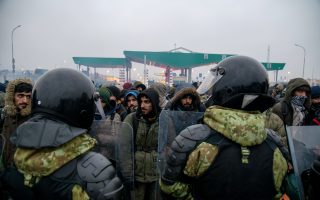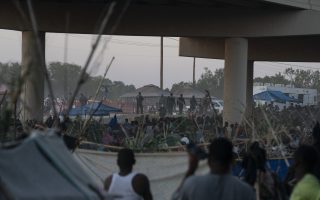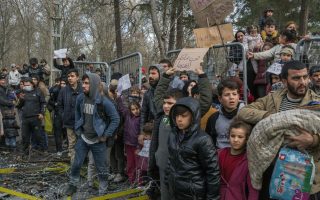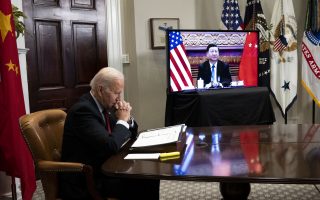A sanctuary takes shape, framed around migrants
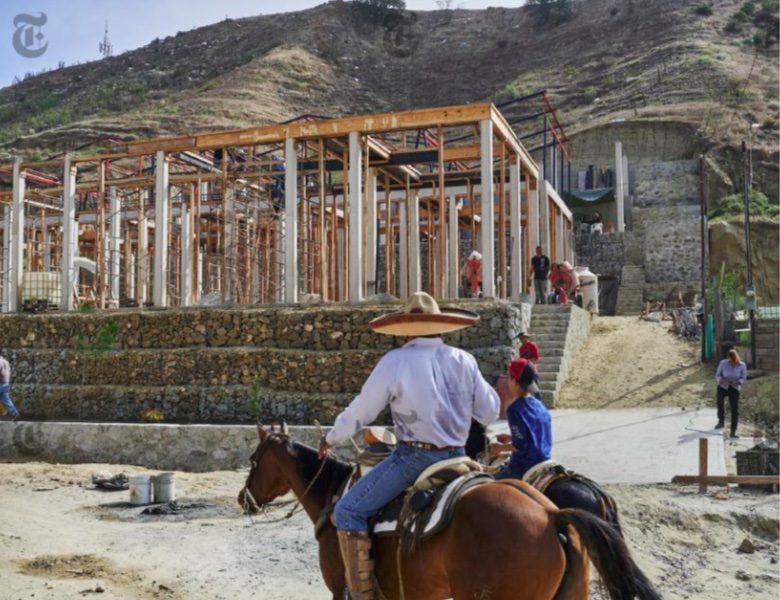
The Cañón de Alacrán (Scorpion’s Canyon) is a craggy valley that abuts the U.S. border wall, just west of Tijuana, Mexico. It winds through an arid landscape of garbage-strewn arroyos, yucca and sagebrush, without paved roads or sewerage. About 93,000 inhabitants, many of them refugees from Central America, live there in illegal squatter settlements inside roughly built lean-tos, tents and shacks made from scavenged refuse.
Until recently, the impoverished population has made do with these rudimentary shelters. But deep within the fractured landscape, a bold experiment in social housing is being realized. It is called El Santuario Frontera, or the Border Sanctuary, a live-work collective for homeless refugees.
The sanctuary’s designers, Teddy Cruz, a Guatemalan-born architect, and Fonna Forman, a political scientist from Wisconsin, have been working on both sides of the border for more than a decade, studying the transient population and the informal urbanization taking place. Professors at the University of California, San Diego, where they lead a cross-disciplinary design practice, Mr. Cruz and Ms. Forman see an urgent need for humanitarian shelter, as more immigrants flee northward, many to escape climate change, drug cartels or political oppression. Some — blocked, deported or caught in the United States immigration system — have been camped at the border for years.
Mr. Cruz and Ms. Forman observed how the refugees recycled the waste materials of San Diego and built shelters in slow, incremental stages with leftover debris from construction sites and landfills. “Out of necessity, everything becomes useful,” Mr. Cruz said.
Working with two pastors, Gustavo Banda Aceves and his wife, Zaida Guillén, who run a refugee camp in the Alacrán canyon, they set out to develop not just emergency housing but a stable community that made use of the resources at hand.
The design team created drawings and architectural models and brought them back to the community for suggestions. They eventually came up with a multitiered master plan designed to house 350 homeless immigrants.
It is a pared-down pueblo, like the ancient stacked dwellings of Taos, New Mexico. But instead of adobe, the housing is being built with concrete and steel framing that can be easily expanded and replicated to accommodate the growing population.
The foundation was funded by the sale of a 1951 oak-and-lacquered-metal Kangourou armchair by the French designer Jean Prouvé. Robert M. Rubin, a collector, sold the piece for $400,000 at a Sotheby’s auction two years ago and donated the proceeds. The eroded hillside to the south of a stream that runs through the canyon was terraced and reinforced with retaining walls created from boulders held in place by metal mesh. This yielded a base on which to build the two-story Sanctuary as well as help to restore and stabilize the natural topography.
The second phase has involved the construction of three pavilion-type structures with gridlike frameworks of reinforced concrete. The upper level has been assembled with prefabricated steel framing donated by Mecalux, a Tijuana manufacturer of industrial storage racks. Inspired by Prouvé’s prefabricated metal housing of the 1950s, Mr. Cruz realized that with a few adjustments, the structural ribs and struts could be easily repurposed for dwelling purposes.
The Mecalux framework will be topped with low-pitched butterfly roofs made from corrugated metal and plastic gutters that run through the valleys to collect rainwater and direct it into an underground storage tank, to be used for irrigation.
Once the roofing is completed, selected immigrant families will move into their bays within the unfinished pavilions, tents and all, to build their own sections with plywood and recycled materials.
“It’s all about modularity, working in partnership and sweat equity,” Mr. Cruz said.
Lorena Branks, a Tijuana-based architect, will organize the infill work, while David Deutsch, a New York artist, donated $650,000 through his PARC Foundation to create cooperative workshops on a pedestrian street that runs between two of the pavilions.
One workshop will teach the immigrants skills for completing their own structures. The other will be an industrial laundry operated by residents to generate revenue.
Plans are already afoot to build a 2,200-square-meter community center. The four-story structure will include a high school, social services, a medical clinic, a theater and an open-air market.
“We’re trying to reimagine the migrant shelter as a more permanent infrastructure of inclusion and economic self-reliance,” Ms. Forman said. “We’re designing for long-term sustainability.”
[This article originally appeared in The New York Times.]

